| Listing 1 - 10 of 44 | << page >> |
Sort by
|
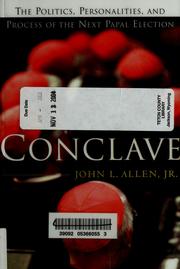
ISBN: 0385504535 Year: 2002 Publisher: New York (N.Y.): Image
Abstract | Keywords | Export | Availability | Bookmark
 Loading...
Loading...Choose an application
- Reference Manager
- EndNote
- RefWorks (Direct export to RefWorks)
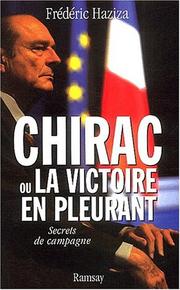
ISBN: 2841146049 Year: 2002 Publisher: Paris : Ramsay,
Abstract | Keywords | Export | Availability | Bookmark
 Loading...
Loading...Choose an application
- Reference Manager
- EndNote
- RefWorks (Direct export to RefWorks)
Presidents --- Présidents --- Election --- Election
Book
Year: 2002 Publisher: Washington, D.C.
Abstract | Keywords | Export | Availability | Bookmark
 Loading...
Loading...Choose an application
- Reference Manager
- EndNote
- RefWorks (Direct export to RefWorks)
Election districts --- United States. --- Election districts.
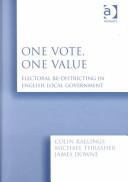
ISBN: 0754621529 Year: 2002 Publisher: Aldershot Ashgate
Abstract | Keywords | Export | Availability | Bookmark
 Loading...
Loading...Choose an application
- Reference Manager
- EndNote
- RefWorks (Direct export to RefWorks)
Apportionment (Election law) --- Election districts --- Local government
Book
ISBN: 2738166725 Year: 2002 Publisher: Odile Jacob
Abstract | Keywords | Export | Availability | Bookmark
 Loading...
Loading...Choose an application
- Reference Manager
- EndNote
- RefWorks (Direct export to RefWorks)
Pourquoi le pays des Droits de l'homme a-t-il pu donner a son extreme droite la moindre chance d'acceder aux plus hautes responsabilites de l'Etat ? Pourquoi ce meme pays, alors que nulle part ailleurs le marxisme ne trouve plus le moindre echo, peut-il accorder tant de credit a son extreme gauche trotskiste ? Ces questions en soulevent une autre, beaucoup plus radicale : Comment vote-t-on ? Comment chacun de nous decide-t-il quel homme ou quel parti choisir ? Quels evenements petits ou grands nous motivent-ils ? A quel reseau d'influence est-on rattache ?A partir d'une cartographie electorale, economique et sociale des 36 565 communes de France, Herve Le Bras apporte une interpretation profondement originale de la nouvelle donne politique francaise. Non, nous ne votons pas en fonction de notre sexe, ni de notre appartenance sociale, de nos diplomes, de notre etat civil ou de notre age ! Alors, comment vote-t-on ? La reponse est dans les cartes. Herve Le Bras est directeur d'etudes a l'Ecole des hautes etudes en sciences sociales (Paris) et Fellow du Churchill College (Cambridge). Il a notamment publie Les Trois France et Essais de geometrie sociale aux Editions Odile Jacob.
Presidents --- Voting --- Election
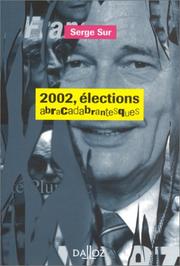
ISBN: 2247050190 Year: 2002 Publisher: Paris : Dalloz,
Abstract | Keywords | Export | Availability | Bookmark
 Loading...
Loading...Choose an application
- Reference Manager
- EndNote
- RefWorks (Direct export to RefWorks)
Presidents --- Political campaigns --- Présidents --- Campagnes électorales --- Election --- Election
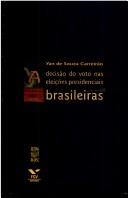
ISBN: 8532802486 Year: 2002 Publisher: Florianópolis : Rio de Janeiro : Editora da UFSC ; Editora FGV,
Abstract | Keywords | Export | Availability | Bookmark
 Loading...
Loading...Choose an application
- Reference Manager
- EndNote
- RefWorks (Direct export to RefWorks)
Presidents --- Voting --- Public opinion --- Election.
Book
ISBN: 2884643974 Year: 2002 Publisher: Sierre : Editions à la carte,
Abstract | Keywords | Export | Availability | Bookmark
 Loading...
Loading...Choose an application
- Reference Manager
- EndNote
- RefWorks (Direct export to RefWorks)
France --- Presidents --- France --- Presidents --- Election
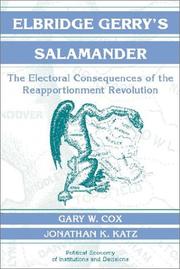
ISBN: 110712431X 1280419210 051117618X 0511041845 051115691X 0511304293 0511606214 0511044305 9780511041846 0521806755 9780521806756 0521001544 9780521001540 9780511606212 9780511044304 9780511156915 9781280419218 9786610419210 6610419213 9780511304293 Year: 2002 Publisher: Cambridge New York Cambridge University Press
Abstract | Keywords | Export | Availability | Bookmark
 Loading...
Loading...Choose an application
- Reference Manager
- EndNote
- RefWorks (Direct export to RefWorks)
The Supreme Court's reapportionment decisions, beginning with Baker v. Carr in 1962, had far more than jurisprudential consequences. They sparked a massive wave of extraordinary redistricting in the mid-1960s. Both state legislative and congressional districts were redrawn more comprehensively - by far - than at any previous time in America's history. Moreover, they changed what would happen at law should a state government fail to enact a new districting plan when one was legally required. This book provides a detailed analysis of how judicial partisanship affected redistricting outcomes in the 1960s, arguing that the reapportionment revolution led indirectly to three fundamental changes in the nature of congressional elections: the abrupt eradication of a 6% pro-Republican bias in the translation of congressional votes into seats outside the south; the abrupt increase in the apparent advantage of incumbents; and the abrupt alteration of the two parties' success in congressional recruitment and elections.
Apportionment (Election law) --- Election districts --- United States --- Politics and government --- 1945-1989 --- 1989 --- -Apportionment (Election law) --- Social Sciences --- Political Science
Book
ISBN: 0313010951 9780313010958 1280422750 9786610422753 9798400686351 Year: 2002 Publisher: Westport, Conn. Praeger
Abstract | Keywords | Export | Availability | Bookmark
 Loading...
Loading...Choose an application
- Reference Manager
- EndNote
- RefWorks (Direct export to RefWorks)
Presidents --- Television and politics --- Political campaigns --- Election
| Listing 1 - 10 of 44 | << page >> |
Sort by
|

 Search
Search Feedback
Feedback About UniCat
About UniCat  Help
Help News
News